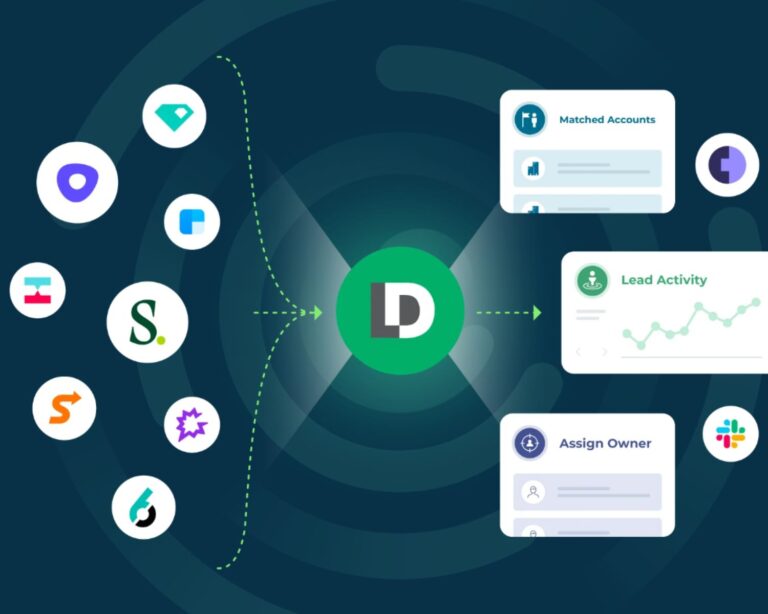In the current economic downturn, revenue teams are now being asked to pivot from a period of growth at any cost to one of growth with efficiency, predictability, and profitability. As a result, after several years of overlapping investments in revenue tech stack tools, many revenue teams are now faced with consolidating the tech stack for efficient growth.
At the same time, revenue teams — and especially Operations teams — are tasked with solving problems in the most efficient manner possible. And, guess what? Efficiency gains often require automation, and additional tools added to the tech stack.
So, whether consolidating, expanding, or, most likely a case of a little of each, it’s never been more important to develop a convincing business case for every single solution in the tech stack. Every renewal, new purchase and cancellation decision faces increased scrutiny from senior management.
This post covers six steps for making a business case to influence and persuade senior management when it comes to budgeting for the tech stack.

Step 1: Identify the Challenge(s) to be Overcome
The first step in evaluating your revenue tech stack is to figure out the needs of your prospective and existing customers and how they’re aligned with the goals of your business. Simply put, what’s good for customers is good for your business long term.
Definitively determine where friction lies in your prospective customers’ buying journeys. When buying journeys become difficult, the best case scenario is the sales cycle is extended. The worst case scenario is that your prospective customers buy elsewhere.
Identifying the key challenges your revenue processes present — from the perspectives of your buyers — will narrow your search for tech stack tools immensely. Start with specific, customer-centric, business goal-driven challenges, like the following:
- Quicken the response time to customer inquiries
- Increase the accuracy in assigning customer contacts to the correct internal representatives
- Eliminate any untimely delays in engaging customers with the right data needed to facilitate their buying decision
- Increase the ability for revenue team members to collaborate
- And more
Start with your revenue team to preliminary pinpoint your current challenges. However, ensure they approach the problems from a customer perspective. Where you can, take the pulse of recent new customers (and maybe even debrief the deals you lost). Also, don’t forget to get a handle on the common challenges of peers in your professional network, either in similar industries, similar job functions, or both!
As challenges come to light, dig deeper into your assessment to ensure you’re identifying underlying root causes rather than more visible symptoms of a larger problem.
Prioritize your list of challenges based on adverse impact on customers and your business’s goals. Then, evaluate your current tech stack to see where gaps exist.
Step 2: Define Your Tech Stack Requirements
There are literally hundreds of available technology solutions to solve for your revenue team’s biggest challenges. It’s important though to filter through those alternatives using criteria that includes:
- The best fix to overcome the challenge, that
- Makes the biggest impact on the customer experience, and
- Drives your business to goal attainment, while
- Allowing for a reasonable return on investment
In building requirements, collaborate with your revenue team to determine what tech stack users require. Additionally, determine how your revenue team will actually utilize the software. If it’s not used, or used improperly, it will not add value to your revenue tech stack no matter how impressive a solution’s bells and whistles.
Once requirements are finalized, begin to build out an exhaustive list of potential solutions. Save time here by starting with the appropriate software category at user review sites like G2, Capterra and TrustRadius. In today’s new buyer journeys, customers spend less and less time on a brand’s digital properties. Consider the following solution requirements:
- Features & benefits — which are “need to have” and which are “nice to have”
- Number of user licenses required
- Ease of use
- Integrations with other solutions in your tech stack
- Future product roadmap — how well the solution will meet likely future needs
- Pricing

Step 3: Create Your Shortlist of Viable Solutions
The next step in your quest to build a viable business case for your revenue tech stack is to pare down your exhaustive list of all the possible solutions that solve for your needs. Your goal here is to narrow your options to a manageable shortlist.
To determine if a solution deserves a spot on your shortlist, ruthlessly compare tech tools with the requirements you and your team established in step two. This is no time to play favorites. Objectively work your way through criteria such as:
- Does the solution solve your key challenge and drive attainment of your business goals?
- Does the solution meet your feature requirements?
- Is the solution consistently reliable?
- Is the solution easy to implement, administer, use and maintain?
- Does the solution integrate seamlessly with other critical tools in your revenue tech stack?
- Is the solution backed with a strong professional services team from the vendor?
- Does the solution have good user reviews?
- Does the solution fit within your preliminary budget?
Step 4: Make Your Selection
After completing the nitty gritty of a technical analysis of technology tools and their ability to best solve for the challenges of both your customers and your team, it’s time to elevate to higher-level considerations.
Simply, do you trust a potential technology vendor with your customers and your business?
All revenue tech stack tools require an effective, trusting, mutually-beneficial partnership with your vendors. Building trust takes time, and consists of a number of small steps. Start determining your level of trust with some final considerations, including:
- Ensure all key internal stakeholders walk through complete demos of the technology and get their questions and/or concerns adequately addressed.
- Scour user reviews from current customers who have challenges similar to yours. If any concerns pop up from your investigation, develop a list of questions to address with your vendor.
- Collaborate with a potential vendor to finalize pricing and service levels, including implementation training and onboarding.
Step 5: Collect Buy-In From Your Revenue Team
Before you purchase a new tech stack tool, you will need buy-in from your team and, quite likely, executive approval. No one will have spent as much time and effort on the research and discovery process as you, so you will need to effectively and persuasively communicate your findings. Moreover, you’ll likely need to eventually justify your decision.
Include everyone who will be affected by the solution, whether it’s a new solution, a replacement solution, or a consolidation of solutions. That list will likely include the following:
- Revenue team members who will use the new tool(s)
- Revenue team leaders who will drive the change management process
- Budget holders
- Executive and others with purchase signing authority
- Information Technology specialists who will run security audits and, eventually, implement the new solution
In developing a vested buy-in, concisely share your research and selection logic, and proactively seek feedback. After those affected by changes to the revenue tech stack and those responsible for budget investment are bought in, the fruits of your efforts present themselves — you’re ready to buy.
Step 6: Purchase Your New Tech Stack Solution
You’re almost ready to finalize your decision with the vendor, but before signing the deal, there are a few substeps to complete first.
- Work with your vendor and your internal purchasing and/or legal team to fully understand all contractual terms. Pro tip: this is not light reading.
- Finalize with the vendor all post-purchase responsibilities, especially implementation and onboarding, customer and professional services, and eligibility for future solution upgrades.
- Negotiate payment terms, and inquire about discounts for annual and/or multi-year payments.
- Socialize payment terms with your internal finance department to ensure budgets are adequately established, particularly if payments are monthly- or quarterly-based.
The era of growth at all costs has given way to a new era of responsible, efficient and profitable growth. Using the steps highlighted above will allow you to successfully navigate the often stormy seas of adding value-added tools to your revenue tech stack.
With a tech stack eliminating the friction points experienced by both your customers and your revenue team, your selling and servicing processes will flow smoothly and seamlessly, reducing sales cycles, increasing conversion, and empowering your team to hit growth targets.











